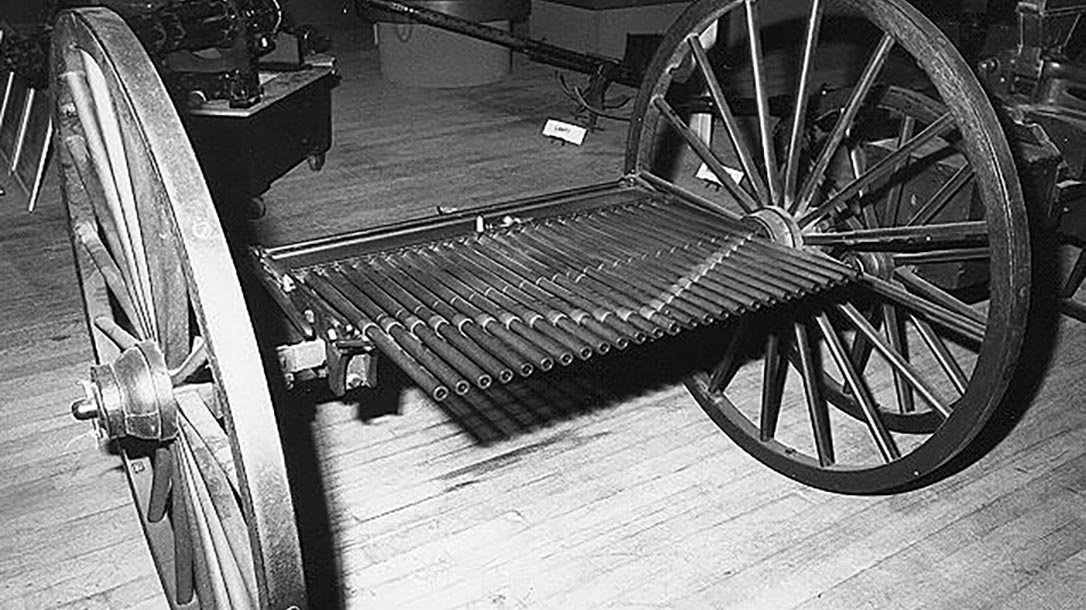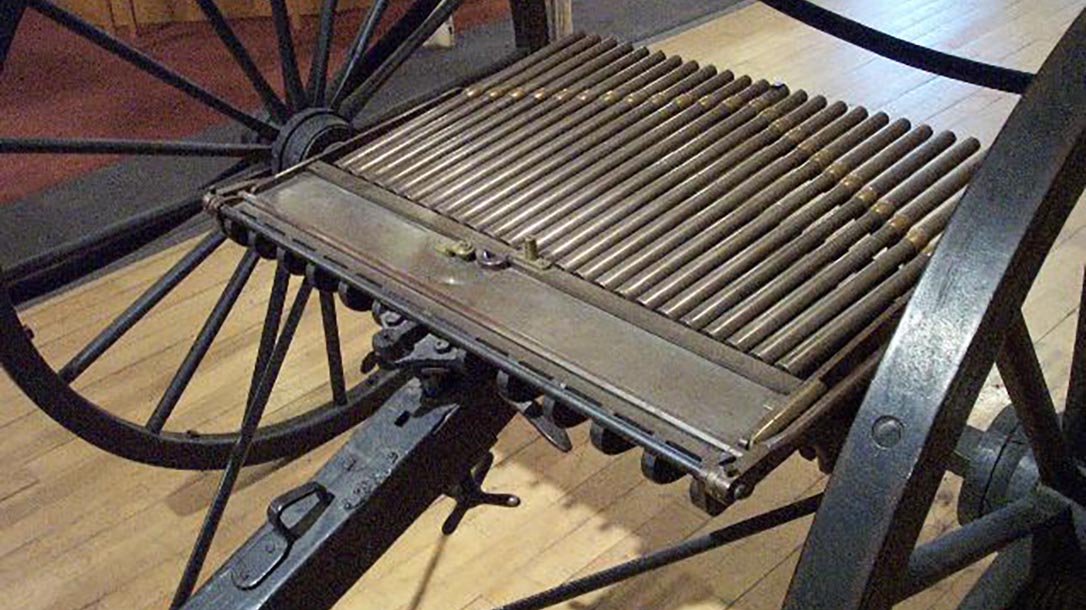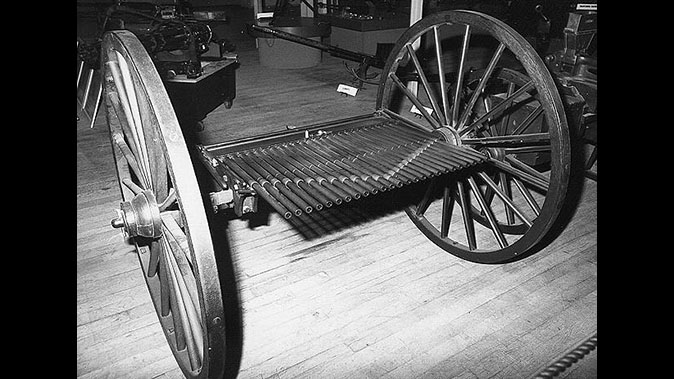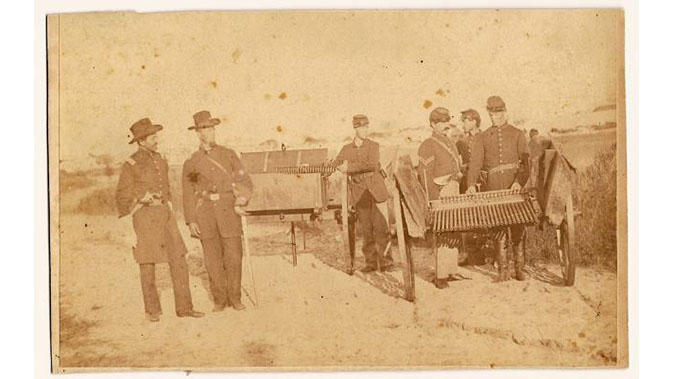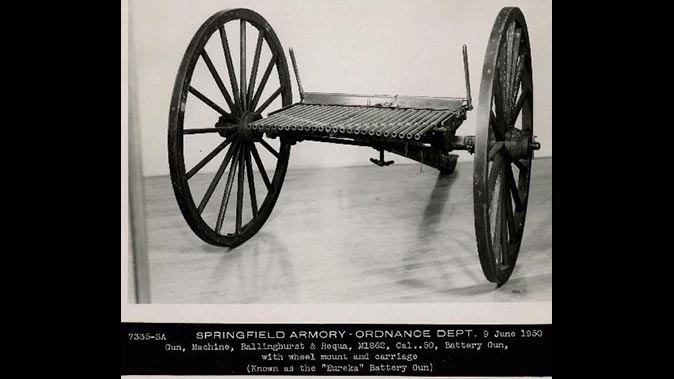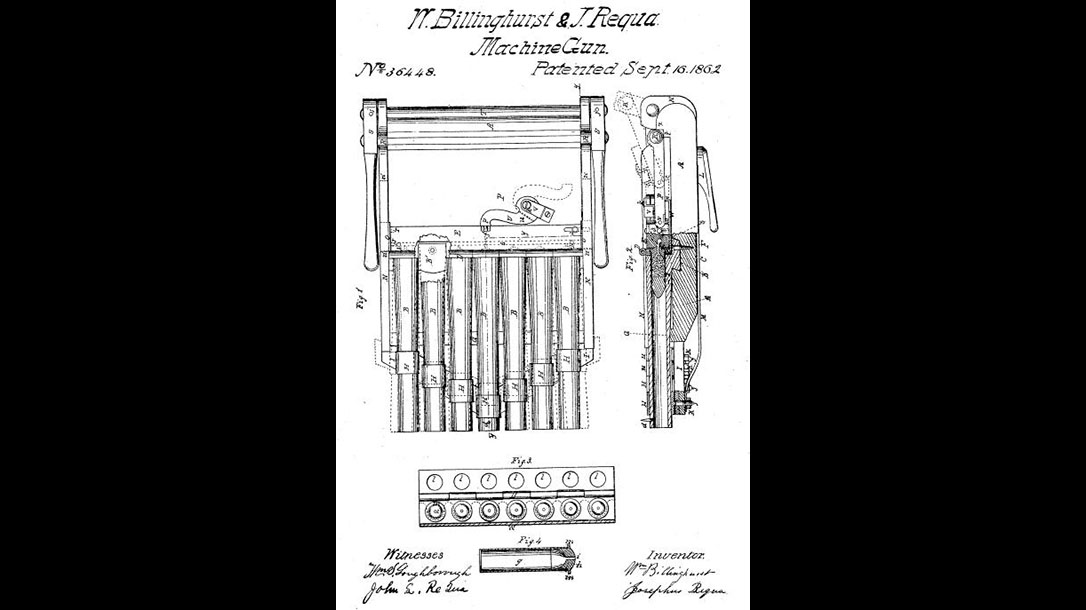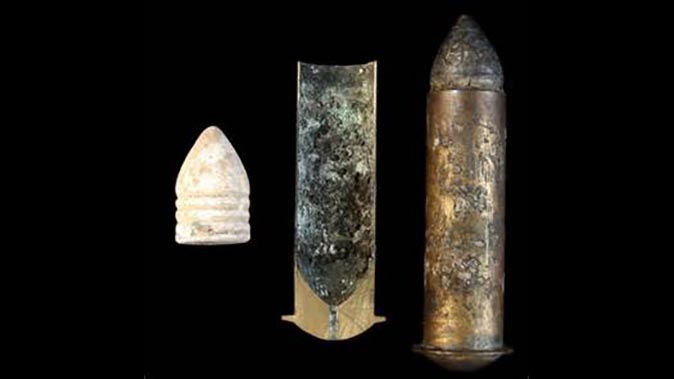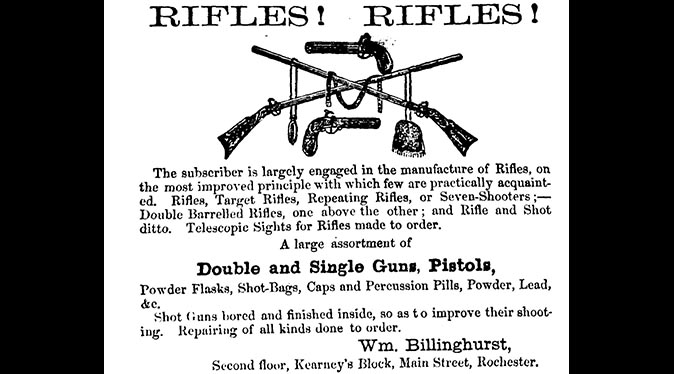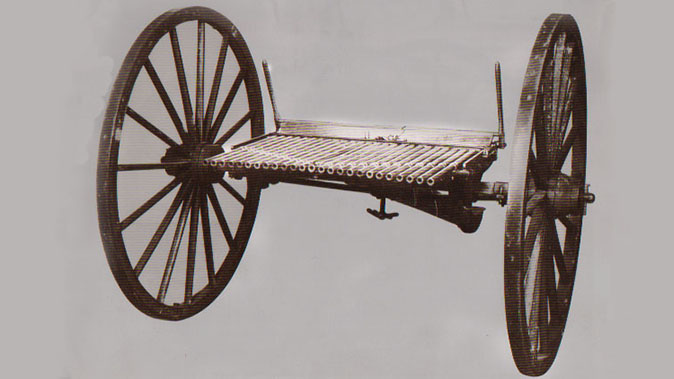The Billinghurst-Requa battery gun is an unusual piece of armament that resulted from an equally unusual partnership between two men from New York: William Billinghurst, a gunsmith, and Josephus Requa, a dentist.
At the beginning of the Civil War in 1861, soldiers marched off to battle with single-shot, muzzle-loading rifles. Multiple designs of shoulder-fired repeating arms would be invented and pressed into service before the war’s conclusion in 1865, eventually replacing muzzleloaders altogether in the coming decades.
Advertisement — Continue Reading Below
Applying the same advancements in repeating firepower to larger gun batteries was next in line for development. Richard Gatling’s invention was the first firearm to become synonymous with the term “machine gun,” despite the fact that its manual operation means it does not fit the technical definition of a machine gun as we know it today.
Even though Gatling’s design proved to be very successful on the field of battle, his gun wasn’t the first to bear the title of “machine gun.” Gatling’s design, patented in November of 1862, was preceded by the Billinghurst-Requa design, which was patented two months before the Gatling gun. The fact that neither design fits the modern requirements of a machine gun is irrelevant; at this point in time, the relatively new term was applied rather judiciously.
25 Barrels at Once
Before Josephus Requa settled on a profession, he spent three years as an apprentice to William Billinghurst, learning how to make and repair firearms. After his apprenticeship ended, Requa decided to go in a different professional direction. He began his study of dentistry in 1853 and was in practice for himself by 1855.
Advertisement — Continue Reading Below
Despite their different vocations, Requa and Billinghurst remained friends through the years. When Requa answered the military’s call for a rapid-fire gun in June 1861, he came up with a design and then consulted with Billinghurst on its feasibility. They built a scale model within the next two weeks and then proceeded to create a fully functioning prototype soon thereafter.
The design for the Billinghurst-Requa battery gun included 25 barrels mounted horizontally to a wheeled carriage. A clip holding twenty-five .52-caliber metallic cartridges was loaded in front of a bar at the barrel breeches. When the attached lever was manipulated, the cartridges were pushed forward into the barrels and the hammer on the single percussion cone was cocked.
Once the breeches were closed, a line of blackpowder was placed in a trough behind the cartridges, which had small holes in their bases through which to channel the powder ignition. A percussion cap was placed on the cone, a lanyard was attached to a trigger and then one person could pull the lanyard and fire all 25 barrels at once.
Advertisement — Continue Reading Below
Because the cartridges were held together by a clip, all 25 could be removed at once, allowing for faster reloading. A crew of three men could fire the gun up to seven times per minute, creating a rate of fire of 175 rounds per minute.
Even though the Billinghurst-Requa gun wasn’t a cannon, it was treated like one in terms of mobility, adopting methods of transport used by artillery crews. Once the 500-pound gun was mounted on its wheeled carriage, the whole package weighed more than 1,300 pounds and required a two-horse team to pull it.
Convincing Lincoln
In April of 1862, Requa met with Brigadier General James Ripley, head of the Ordnance Department for the U.S. Army. Ripley is best known to history for his refusal to implement shoulder-fired repeating firearms in combat, citing their faster rate of fire to be a waste of ammunition. Unfortunately, he had the same view of the Requa-Billinghurst battery gun as he did of the Henry repeating rifle.
Advertisement — Continue Reading Below
However, despite being rebuffed by Ripley, Requa met with President Abraham Lincoln in May of 1862. During their meeting, Requa explained the gun’s function and Ripley’s dismissal of it. Lincoln gave Requa a note to give back to Ripley, basically telling him to listen to Requa. Even so, Ripley was unmoved by Lincoln’s note, so Requa went back to the president and finally arranged for Lincoln to see the gun in action.
Two demonstrations in May proved successful, and a patent followed on September 16, 1862. Still, Brigadier General Ripley dug in his heels; no government contract would ever materialize as long as Ripley had anything to say about it.
Advertisement — Continue Reading Below
On The Front Lines
Despite not having the official blessing of the U.S. Army, Billinghurst-Requa battery guns did see service during the Civil War, albeit on a much smaller scale. Fifty guns were produced with money raised from private backers. The 18th New York Independent Battery purchased a couple of those examples and used them in combat down in Louisiana. The battery’s guns were seen by Major General Quincy Gillmore, who ordered enough guns to outfit five batteries to aid in the capture of Fort Wagner on Morris Island, South Carolina, in 1863.
The government’s final test of the gun came in August of 1864. Even though the gun proved to be reliable and useful, it took two years for the final report to give that official determination. At this time, Billinghurst and Requa received their one and only government contract, for five guns, a year after the Civil War had ended. It would prove to be too little, too late.
By 1866, weapons technology had eclipsed the battery gun. The same fervent advance that created it is also what led to its demise. In an ironic twist of fate, it was the Gatling gun that ended up replacing the Billinghurst-Requa design in military service.
Advertisement — Continue Reading Below
The two men never designed another weapon together and faded into relative obscurity. The final public display of their battery gun, now simply a novelty, was done at the Pan-American Exposition in 1901.
Billinghurst-Requa Battery Gun: Lasting Legacy
The legacy of William Billinghurst and Josephus Requa cannot be overlooked or understated. It was their work, combined with the concurrent efforts of Richard Gatling, which set the course for future arms development. The unlikely partnership between a gunsmith and his former apprentice-turned-dentist would have a lasting impact on the way war would be fought for decades to come.
Billinghurst died in 1880, having never seen the full evolution of his invention. Requa lived to see Maxim patent an actual machine gun in 1883, and he died in 1910. With the outbreak of World War I in 1914, the full potential of their design would be realized. Those European fields of battle are where the machine gun would truly come of age.
Advertisement — Continue Reading Below
This article is from the summer 2017 issue of Guns of the Old West magazine. Grab your copy at OutdoorGroupStore.com.
